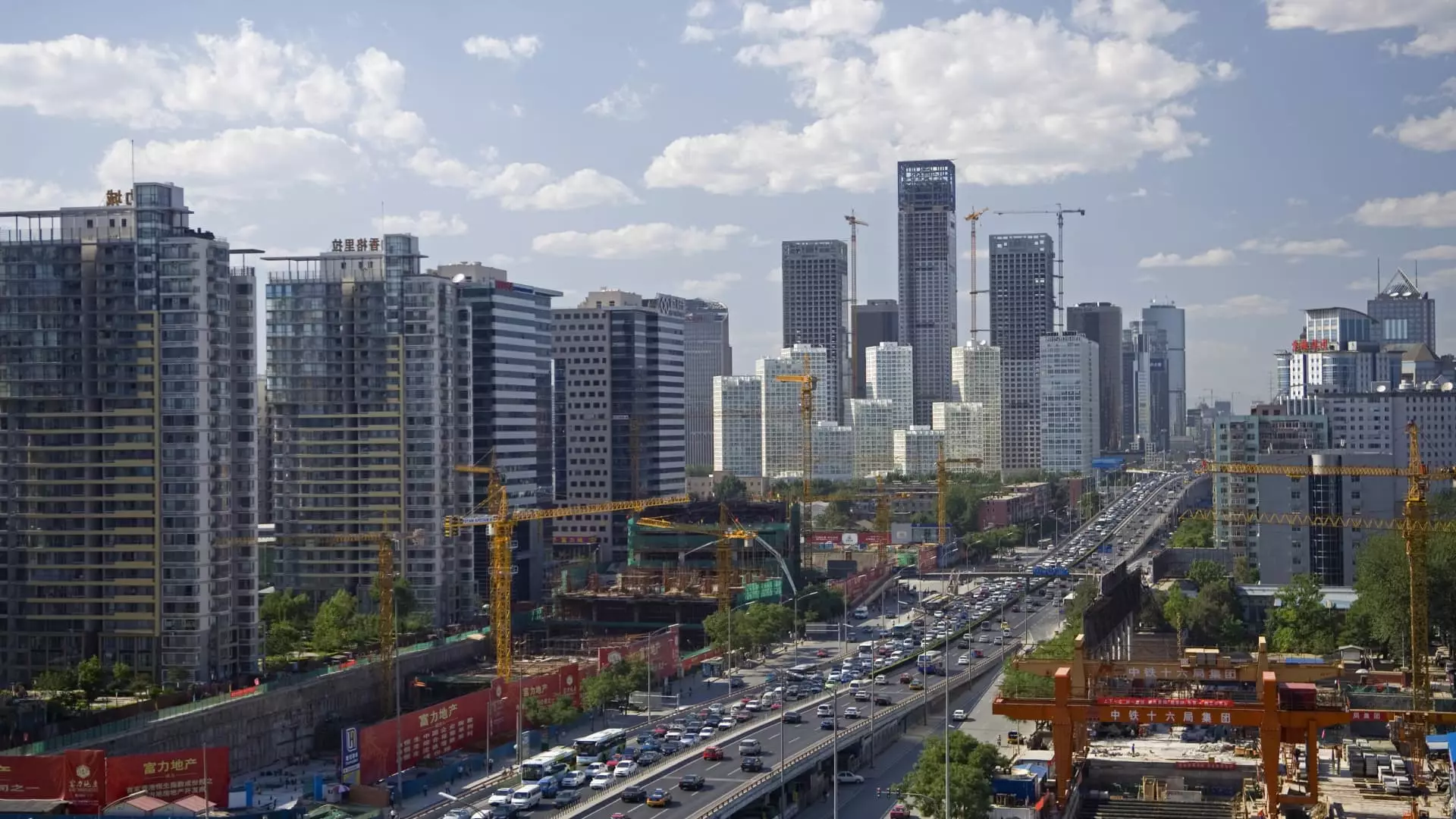China’s economy has recently released figures that initially appear to be a beacon of hope amidst a stormy sea of geopolitical tensions and economic challenges. A reported 5.4% expansion in the first quarter of this year surpasses analysts’ expectations, suggesting an economy that remains resilient in the face of adversity. However, this perceived strength is misleading. Beneath the surface, the strains of a contentious trade war with the United States are beginning to wear on the intricate fabric of the Chinese economy, raising questions about the sustainability of this growth.
The impressive GDP figures can be attributed to a robust stimulus effort launched in late 2024, designed to reinvigorate consumer spending and industrial output in a previously sluggish market. While retail sales soared by 5.9% and industrial output followed closely with a surge of 7.7%, one must temper this exuberance with a note of caution. The real estate sector, long seen as a pillar of China’s rapid urban expansion, is crumbling under the weight of over-investment and stringent regulations. A staggering 9.9% decline in fixed asset investment within real estate underscores the fragility of this sector and highlights a significant vulnerability within an otherwise optimistic economic landscape.
The Ticking Time Bomb of Trade Tensions
Despite the bright spots reported in March, the specter of intensified trade relations between China and the U.S. looms large, threatening to unravel any semblance of stability. The Trump-era tariffs, strategically designed to protect American interests, have resulted in a staggering 145% levy on Chinese goods, met with retaliatory measures that have raised the stakes to a staggering 125% on U.S. imports. Economists are quick to point out that such trade barriers are hardly conducive to sustainable growth; instead, they forecast a significant downturn in China’s export economy.
While figures indicate that the economy is currently thriving, the warning bells are tolling. A sharp contraction in exports is anticipated, with forecasters like UBS predicting a cataclysmic two-thirds decrease in Chinese exports to the U.S. coupled with an overall decline of 10% in dollar terms for this year. These forecasts deliver a jarring wake-up call, revealing that today’s seemingly strong performance may be undercut by tomorrow’s trade realities. The Chinese government must grapple with the notion that long-term reliance on exports is untenable in an increasingly protectionist world.
The Weakened Foundations of Demand
As the world’s second-largest economy treads water, there remains an unsettling undercurrent: domestic consumption shows no signs of significant improvement. Despite government pledges—expressed through an ambitious growth target of around 5%—actual consumer demand is insufficient to fuel a sustained recovery. The statistics bureau’s admission that China’s external environment is “complex and severe” rings hollow against the backdrop of optimistic rhetoric. It is increasingly apparent that while China may boast impressive growth numbers, the underlying demand that supports such metrics is alarmingly weak.
Analysts have grown increasingly skeptical that Beijing can meet its growth aspirations. High-frequency indicators suggest that while the economy may have experienced a rebound, the trade disruptions introduced by the U.S. are likely to manifest as chilling slumps in macroeconomic data in the months to come. The trade war’s impacts will inevitably bubble to the surface, potentially thwarting known policies and entrenching uncertainty in an already frail consumer economy.
Pressure for Proactive Policy Measures
With these pronounced cracks becoming increasingly visible, the Chinese leadership faces mounting pressure to enact proactive policies aimed at stimulating domestic demand. Economists anticipate that in response to this economic turbulence, China will accelerate its monetary and fiscal strategies—promised through a combination of interest rate cuts and expansive government spending designed to patch the fissures in the economy. However, the question remains: are such measures enough?
Beijing’s planned fiscal stimulus of 1-1.5 trillion yuan seeks to counterbalance the adverse impacts of tariffs and plummeting export levels. But even with such sweeping steps on the horizon, the effectiveness of these policies is uncertain. Decisions made today will play a crucial role in determining whether China’s growth trajectory can be sustained or if the nation will plunge headlong into a more considerable crisis of confidence in its economic foundations.
In a rapidly changing world, China stands at a crossroads. While current economic indicators may paint a deceptively rosy picture, the underlying threats posed by trade tensions, market instability, and declining consumer demand present an urgent call for introspection and decisive action. The time for complacency in the face of complex challenges is fast running out.


Leave a Reply